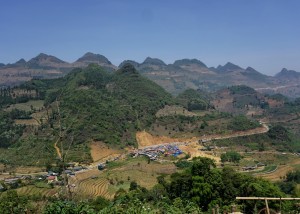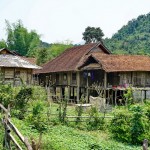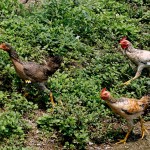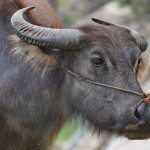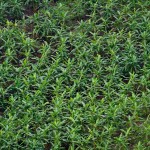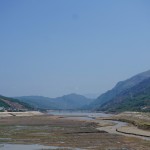We are glad to have decided to travel in the mountainous North of the country. In the higher altitude we found some cooler nights and fresh winds. In the evenings it started about a week ago with heavy rain and thunderstorms, helping to cool down but also regularly causing powercuts. During the day it only happened once so far, that we could just jump under a shelter before it poured rain as out of buckets. The first signs of the monsoon this must be and most likely we will get caught a few times.
Our legs had to work harder though with all the up and down. From Bac Ha it was a great downhill of 800m and then flat to Lao Cai, an almost chines looking town at the boarder between Vietnam and China. The following day we had to climb up to Sa Pa on 1600m above sea level. Then from the pass at 1900m it went down a winding road 1600m into a remote impressive valley to Tam Duong, a quiete nest. Here we almost only got some blocks of dry deep fried rice for dinner thanks to my excellent knowledge in Vietnamese. A couple of other passes got us into the interesting landscape of the carstmountains of Lai Chau, before we reached the steep valleys of the River Na with the dschungel like forest. This region of Muong is home to some big hydropower schemes. Afterward on our way to Dien Bien Phu the valleys became a little smaller, softer with more villages and their plantations of banana, pineapple and rice. Dien Bien Phu again is a town famous for the fierce battle against France in 1954. For us it is also the bordertown, where we take a restday, before we climb another pass and after 36km hope to enter Laos.
After the touristy Sa Pa, St. Moritz of northern Vietnam, we traveled in rather remote, less populated areas. We passed little villages with simple wooden shelters and partly suitable wooden houses about 2m above ground built on poles. Here the buffelo still observe how dogs and pigs run around along the roads. The chooks I don’t mention as they are on the roadside all over the country anyway. The smiling waving children are still used to move about in nature. The traditional dresses we had seen first in the markets, that had seemd a bit like costumes in Sa Pa, are naturally used here as everyday clothes and vary from village to village. The people live from their products and from keeping chooks, pigs, buffelo, dogs and cats. Farming is handwork by men and women still. Along the streets there are very basic general stores, streetfood stands and a motorbike workshop. We found women sewing or doing cross stitch. Of course you see a mobile phone an many hands as the mobile net seems to reach the most hidden corner of the country and free WiFi is available in every coffee place or guesthouse.
The motor of modernisation and improving access seems to be the hydropower. With the construction of some big Hydrodams roads were built and villages relocated. Now they bring money and new ideologies into the region.

